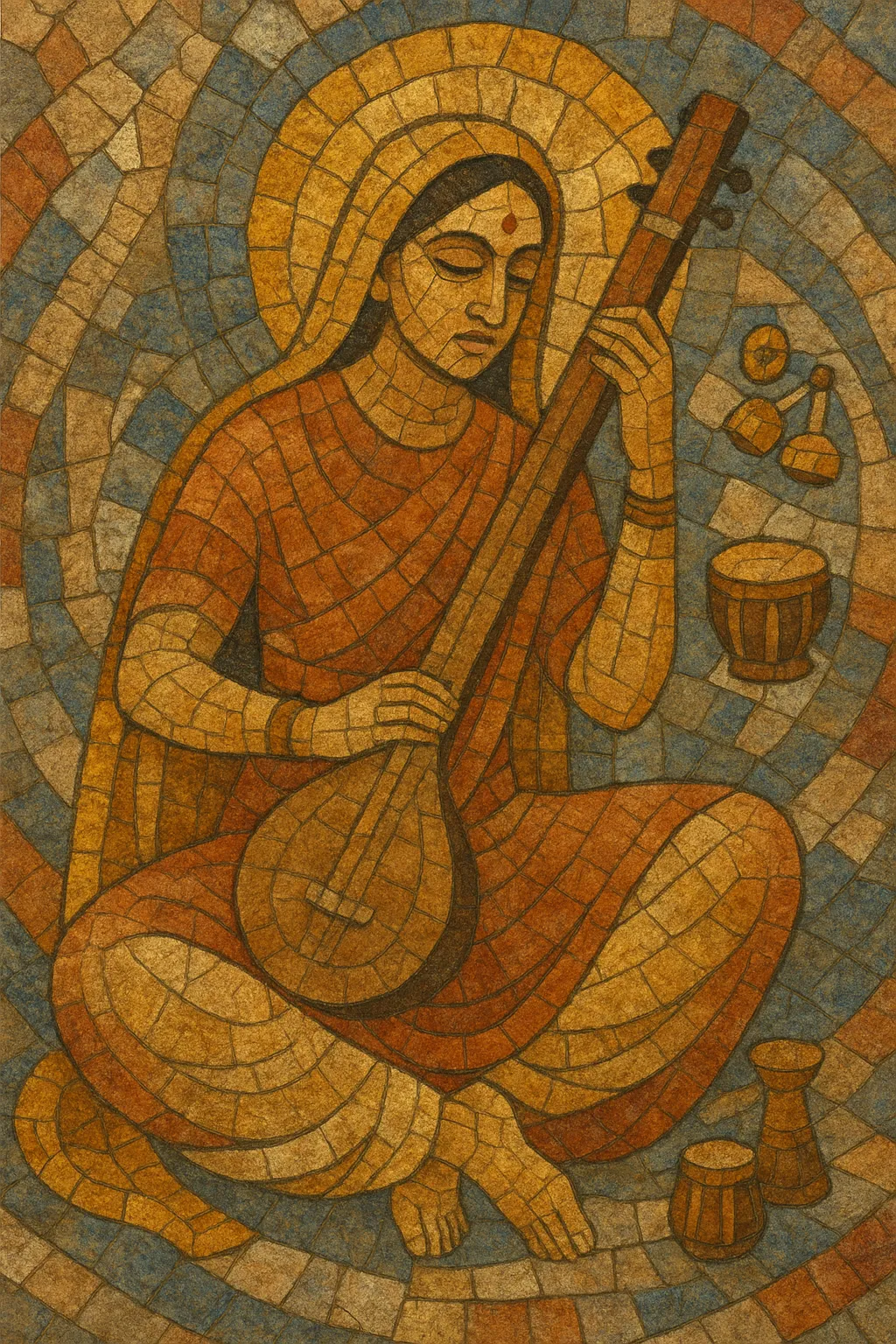Devotional is a broad South Asian musical genre centered on spiritual praise, meditation, and communal worship. It encompasses a range of forms—such as bhajans, abhangs, kirtans, and Sufi songs—that are designed to invoke the divine, cultivate devotion (bhakti), and foster collective participation.
Musically, Devotional draws on raga-based melodies, cyclical tala (meter), and a drone foundation (tanpura or shruti box), while accommodating both austere chant-like settings and richly ornamented, improvisatory singing. Performances may be solo or call-and-response, accompanied by harmonium, tabla/dholak, handclaps, cymbals (manjira), or mridangam, and rendered in many languages including Sanskrit, Hindi, Marathi, Tamil, Bengali, and Urdu.
Modern recordings range from traditional temple and dargah repertoires to studio-produced devotional pop and global kirtan, with arrangements that can include acoustic guitars, keyboards, and ambient textures. The lyrical focus remains on praise, remembrance of divine names, surrender, and moral or philosophical reflection.
Devotional music coalesced during the Bhakti and Sufi movements across the Indian subcontinent, though its roots stretch back to Vedic chant and temple liturgy. Bhakti poet-saints popularized accessible forms of worship music—bhajans, abhangs, and kirtans—that emphasized personal devotion over ritual formalism. In parallel, Sufi musicians developed Persian–Indic devotional singing in shrines (dargahs), centering on remembrance (zikr) and spiritual ecstasy.
As Hindustani and Carnatic classical systems crystallized, devotional repertoires absorbed raga and tala frameworks while retaining congregational and vernacular appeal. Courtly and temple traditions (e.g., dhrupad in the North, kritis and varnams in the South) intertwined with folk devotional forms, creating performance practices that balanced formal rigor with spiritual intent.
With the advent of gramophone, radio, and film, devotional songs reached mass audiences. Temple and shrine repertoires moved into studios, and iconic singers recorded bhajans and Sufi songs for broadcast and cinema. Harmonium, tabla/dholak, and tanpura remained central, while modern orchestration expanded timbres without displacing the genre’s melodic and textual core.
From the late 20th century onward, global kirtan and mantra music brought Devotional aesthetics into yoga, wellness, and world-music circuits, often blending acoustic drones with ambient pads and gentle pop harmonies. Meanwhile, traditional forms continue in temples, ashrams, and dargahs, sustaining lineage-based singing styles and community participation.


